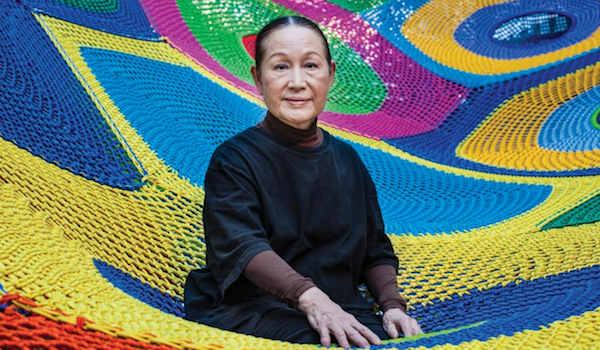
SOCIAL NETWORK

Toshiko Horiuchi MacAdam explains that the crucial turning point in her textile practice came the day two children innocently clambered onto her art. Despite being sited within the unspoken no-touch rules of the gallery, Toshiko saw that ‘suddenly the piece came to life. My eyes were opened. I realised I wanted just such a connection between my work and people alive at this moment in time – not a hundred years from now. I realised I was in fact making works for children.’

If Japanese textile art brings to mind subtle investigations of monochrome materials, you would not be wrong. But Toshiko is not that kind of artist, at least not today. Her textile art first emerged in the late 1960s and enjoyed acknowledgement in publications such as The Art Fabric: Mainstream, which described her Air Contained in a Floating Cube (1977) as a ‘haloed radiance’ of linen and Mylar knitted panels and floodlights. Her past work suggested a defiance of gravity, but her work for children now actively encourages it.

After studying fine art and weaving at the Tama Art University in Tokyo, Toshiko’s postgraduate studies at the Cranbrook Academy of Art in Michigan provided the freedom to determine her own direction. A persistent interest in space, tension and the ability of the textile to act as both structure and surface emerged. Her 1976 sculpture Moving Columns made in Thread in the ancient technique of sprang, an early elastic textile structure, epitomises these interests. Today Toshiko’s creations share some visual similarities with the work of Brazilian artist Ernesto Neto or Canadian Janet Echelman’s installations. But closer inspection reveals the integration of form and function in Toshiko’s work that focuses on an entirely different audience by inviting the energy of children into her work…
To read this article by Jessica Hemmings in full, order your copy of Selvedge issue 60 here.
